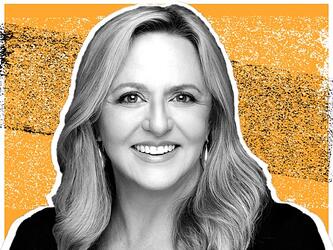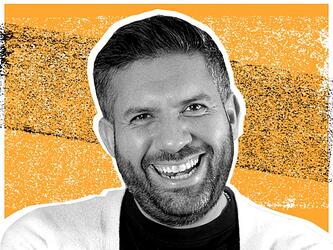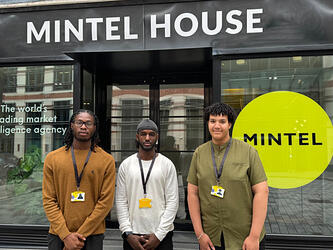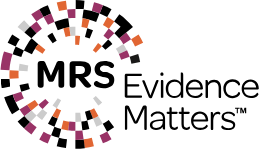Article Not Available
The challenge
Carlsberg is Sweden’s leading brewer. The company develops, manufactures and sells beers, mineral water and soft drinks and distributes an extensive selection of wine and spirits.
On-trade (sales for consumption at pubs, restaurants and so on as opposed to sales for drinking at home) accounts for more than 20% of Carlsberg Sweden’s beer sales, making it crucial for the business. It is also a receptive channel to innovation because it’s where customers are most willing to try new things – but achieving those sales means investing time and money. Each individual outlet requires attention in the form of time from the sales representative and materials provided by the brewer. It is important that Carlsberg researches the market to optimise how it allocates staff time and resources.
Carlsberg Sweden was particularly interested in discovering more about the effect of point-of-sale materials on buying behaviour in pubs. The point-of-sale in a pub tends to be cluttered – there are bottles, beer mats, taps, towels, coolers, menus and posters. The company had conducted several previous on-trade studies looking at pubs and their customers to get a complete understanding of the channel. An ethnographic study had provided a picture of customer behaviour and clues as to what affects purchases, and Carlsberg was keen to quantify these findings.
The brief
Carlsberg approached Ipsos Sweden in April last year about running an eye-tracking study. The company wanted to find out which point-of-sale materials consumers’ eyes would be drawn to in the cluttered environment of a pub -– and which ones they wouldn’t notice.
The approach
To conduct the study, Carlsberg wanted to use Tobii Glasses – a mobile eye-tracking system that can be used in retail locations. It was important to use a device that looked and felt as natural as possible to minimise the effect on participants’ behaviour. This would be the first time Tobii’s glasses had been used for a live study in a pub to understand how people choose beer. Ipsos also worked with MRC International to collect the eye-tracking data.
Ipsos selected three venues in Stockholm for the study: a restaurant, a sports bar and a British/Irish pub, to see whether different environments would give them different results. The team selected participants as they entered the venue, asking them whether they had already decided what type or brand of drink they were going to order.
The participants then put on the glasses, which are calibrated by a Tobii representative, and proceeded to order a drink at the bar. A representative from Ipsos followed them to the bar as they ordered to see how they interacted with others. After the purchase decision, a follow-up interview was carried out to find out more about how the participant chose their drink.
A total of 250 people took part in the eye-tracking study, and Ipsos also interviewed 10 bartenders and conducted a focus group with a further six to see how their experience compared to the consumers’ experience, as seen in the eye-tracking study.
The findings
Once the eye-tracking data was compared to the data from the interviews, Ipsos Sweden was able to draw key findings from the study. The majority of participants had not decided what brand to buy when they walked into the pub, and a significant percentage of participants admitted to being influenced by point-of-sale materials before making their selection.
Participants in the eye-tracking study looked at around eight different point-of-sale materials. The study provided insight into what materials people do and don’t see when ordering drinks at the bar, allowing Carlsberg to assess which ones were most and least effective in different settings.
The interviews and focus groups with bar staff backed up the findings of the eye-tracking study, as well as providing insights into how staff think and behave. They enjoy interacting with customers and see themselves as being able to influence people’s choices (a finding verified in the eye-tracking study and consumer interviews). This showed Carlsberg the importance of ‘influencing the influencers’, and how this can be done through the point-of-sale materials supplied.
The study also looked at how consumers moved around in the outlet, producing ‘navigation maps’. There was a clear difference in the behaviour of customers in
the bars and customers in the restaurant – in the bars the customers walked around, looking at several different point-of-sale material before making their choice, while in the restaurant people stopped in the entrance waiting to be seated, and then followed the waiter to the table without looking at much on the way. Drink choices were made after studying the menu.
The outcome
Carlsberg Sweden will feed back its findings to sales representatives to ensure that their materials are positioned in the parts of the outlets that will be noticed by customers.
As a result of the study Carlsberg Sweden has been able to tailor its marketing and reduce spending on point-of-sale material that is less effective. The study provided quantifiable data on the effectiveness of Carlsberg’s marketing and point of sale material. Having this statistical evidence has helped the marketing team to demonstrate to senior management where budgets need to be allocated in order to give the company competitive advantage and to reduce costs in other areas.
Jonas Ydén, market research manager at Carlsberg Sweden, says: “We pride ourselves on being able to understand consumers’ likes and behaviours, and eye-tracking has allowed us to take this to the next level. By tracking a potential customer’s point of gaze we are able to measure aspects of the decision-making process in a way that has never been done before to understand what influences them. We can then use this information to help us market our products better in the future.”

We hope you enjoyed this article.
Research Live is published by MRS.
The Market Research Society (MRS) exists to promote and protect the research sector, showcasing how research delivers impact for businesses and government.
Members of MRS enjoy many benefits including tailoured policy guidance, discounts on training and conferences, and access to member-only content.
For example, there's an archive of winning case studies from over a decade of MRS Awards.
Find out more about the benefits of joining MRS here.










0 Comments